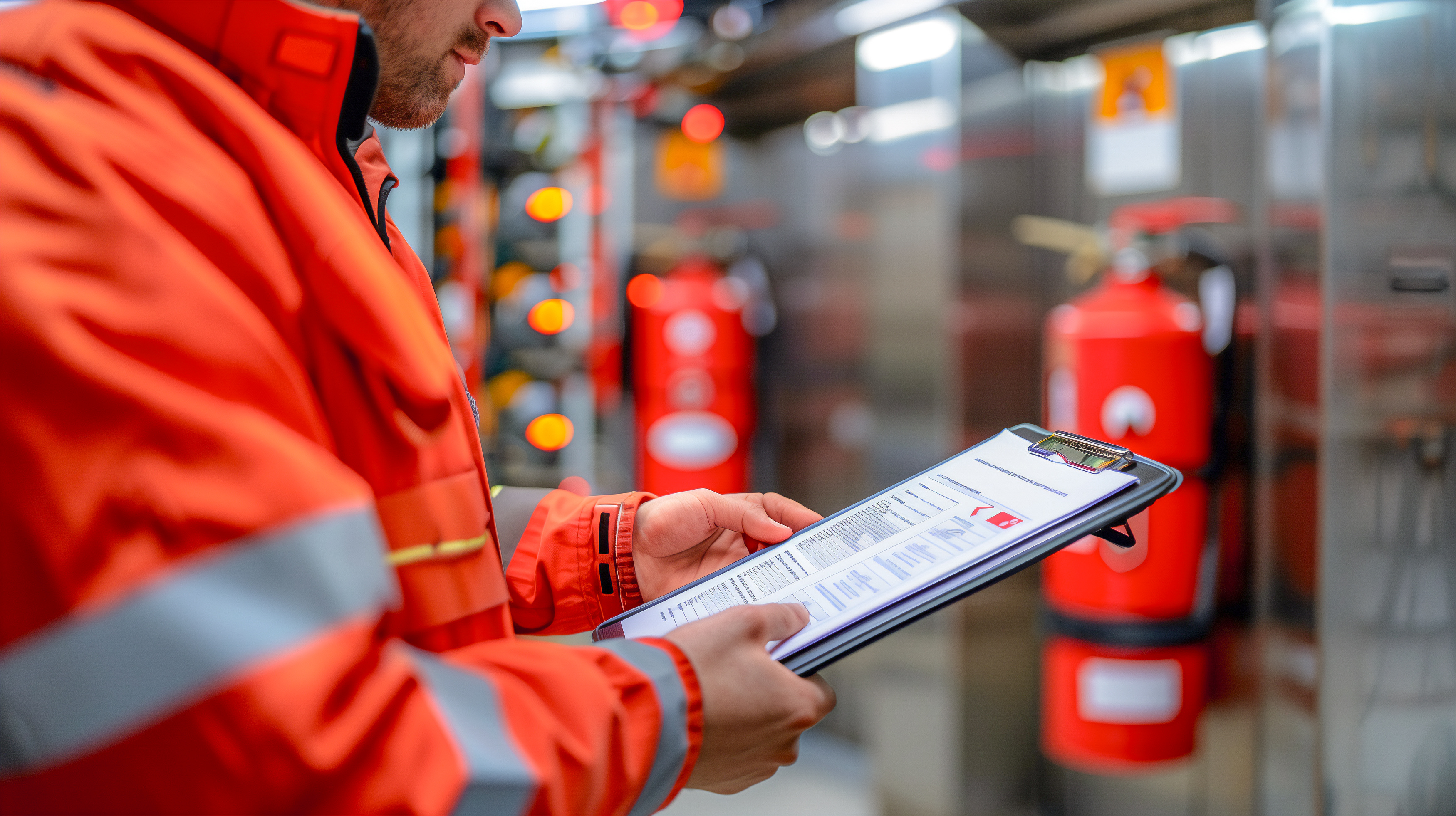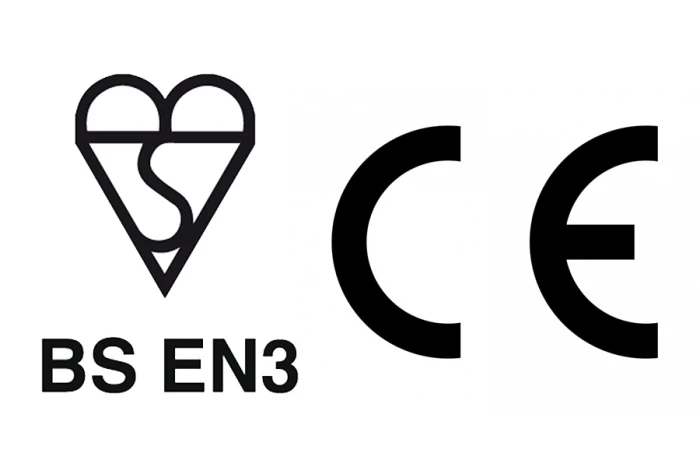


















 Book a service
Book a service

09/08/2024 • by Lynsey B

When buying fire extinguishers, you have a lot of different factors to consider. It’s important to be aware of everything from the extinguisher medium, to its size, to its functional temperature range. However, it can often feel as though there are so many factors and elements to consider that it can be overwhelming.
It can be particularly confusing when you’re presented with a range of different certifications and accreditations for any given fire extinguisher. However, being able to understand these different certifications will allow you to make the best, most informed decision about your fire safety solutions. In this guide, we’re going to discuss the different fire extinguisher certifications, how you can identify them, and what they mean.

BS EN-3 is the most common certification that you’re likely to see when looking at fire extinguishers. It refers to a European standard for all portable fire extinguishers. BS stands for British Standard. The British Standards Institution, or BSI, is the standards body in the UK. It produces technical standards for a range of products and services across industries.
EN-3 stands for European Norm. It is a European standard for portable fire extinguishers set by the European Committee for Standardisation. It is a legal requirement that all fire extinguishers are compliant with this standard. The BSI certifies this standard in the UK.
The EN-3 exists to ensure that all fire extinguishers are fully fit for purpose. This includes ensuring that they are constructed well enough to stand up to any potential external changes, such as pressure or atmospheric changes, that could prevent them from working properly.
Prior to EN-3, the standard for fire extinguishers was BS 5423:1987. This standard used a unique colour coding system for fire extinguishers of different types. However, in 1997, this was withdrawn, and the BS EN-3 requires 95% of a fire extinguisher’s body to be coloured red, with 5% colour-coded to the specific fire extinguisher type. This is why fire extinguishers are almost all coloured red, with labels of different colours indicating the medium inside.
On Fire Protection Shop, you can recognise that a fire extinguisher has BS EN-3 certification by the Kitemark located at the top of the product page.
MED is the Marine Equipment Directive, a European Union directive for marine equipment. Fire extinguishers that have been MED-approved are approved for use on boats, ships, and oil platforms. To meet MED approval, these extinguishers must meet specific design and construction standards. MED certification is given after rigorous testing to ensure that they are safe for use in marine environments.
In order to identify fire extinguishers that have been MED-approved, look out for the MED “ships wheel” logo. This indicates that they are fully compliant and safe for use in various marine environments.
MSR certification also applies to the use of fire extinguishers while on marine vehicles. It was put into place as a replacement for MED approval following Britain’s exit from the European Union. The MSR requires the same stringent standards for quality and testing as the MED.
All equipment that has achieved UK conformity assessment can be identified by the Red Ensign.
If a fire extinguisher is labelled as CE Approved, that means that it complies with the standards set out by the EU for safety, health, and environmental protection. CE stands for Conformité Européenne. It is mandatory that certain products, including fire extinguishers, sold within the European Economic Area have a CE marking.
In order to receive CE approval, fire extinguishers typically need to be compliant with BS EN-3. A fire extinguisher from Fire Protection Shop labelled as CE Approved is one that has gone through a great deal of testing to ensure its effectiveness, safety, and performance. It is considered safe and effective for use in fire emergencies.

The UKCA is a more recent addition that replaced the CE marketing for products being placed on the market in Great Britain since the 1st January 2021. UKCA stands for UK Conformity Assessed Marking. All products placed on the marketing in Great Britain will require this marking to demonstrate their quality and construction.
You may see both ‘CE Approved’ and the UKCA marking on many fire extinguishers on the market. This is because there is an arrangement for the acceptance of CE marketing until 31 December 2024. From 1st January 2025, UKCA will be the certification for fire extinguishers throughout Great Britain.
The Loss Prevention Certification Board (LPCB) is a third-party certification body, recognised across the globe. The LPCB has set the standards required to ensure that fire and security products perform as effectively as possible.
The LPCB provides third-party certification that a fire safety product meets its rigorous standards. The presence of LPCB third-part certification demonstrates that a manufacturer has done their due diligence to ensure the quality of their fire extinguisher, allowing you to rest easy knowing that your fire extinguisher meets the highest possible standards.
The range of information present when looking for the right fire extinguisher can seem complex at first, but with this guide, you can easily understand what each certification represents. At Fire Protection Shop, we’re dedicated to ensuring that our fire extinguishers meet the highest possible standards of quality.
If you would like any more information about fire extinguisher certifications, get in touch today with one of our engineers at 03300580631 or contact us online.
We use cookies to enhance your site experience. Choose your preferences below.

